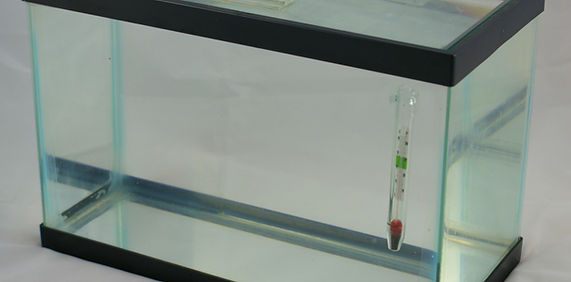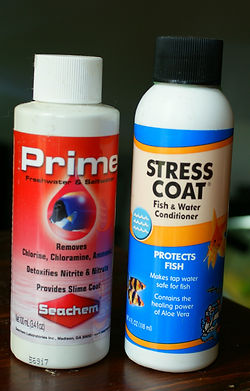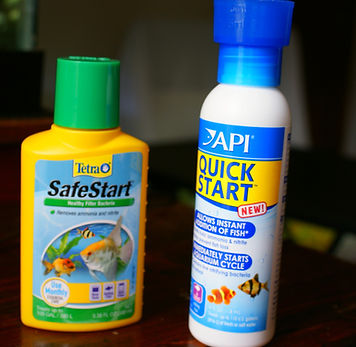
Setting up a New Aquarium
A key rule for new aquarium keepers is more water and less fish. There are some formulas about one fish per gallon of water, but this can be dangerously deceiving as you can purchase an aquarium where the dimensions don't match the fish. Understand the fish you want to keep before deciding on your aquarium, but once you have that aquarium there's an entire process in which you'll have to go through before you can actually add the fish. Though that might sound intimidating, it is usually a processed relished by experienced fish keepers.

Always ensure your aquarium is clean and clear of debris. Dust from setting on the shelf can accumulate. A damp paper towel will usually take care of this.

Now consider your water. This can be sourced from various places. You could buy gallons of spring water, use tap water and a commercial treatment, or well water. All of these have their ups and downs, but the desired results are always the same- You want water that isn't going to hurt the fish. This means a source of water without flouride, choromines and so forth. We will discuss this much more in the future and will place a link here. If you're using a commercial product to make tap water safe for fish, always mix the water and treatment fluid outside of the aquarium, and then add it some time later.
Consider the location of the aquarium. Avoid direct sunlight while stationing it near a power socket. Sunlight can create issues with algae, stress the fish, and cause smaller aquariums to heat up rapidly. As a safety precaution, never set your aquarium in front of an electrical socket, as even minor splashes can make their way into the pronged holes.
(Note that once you have the aquarium finished there may still be some cloudiness to it. A good mechanical filtration media will help remove this.)


Once you have your aquarium placed, begin processing the substrate. Adding substrate or gravel that has no been washed can introduce debris from the manufacturing process that can cloud the water. Even if you add water slowly as to not disturb the substrate and cause cloudiness, flow, the movement of fish and regular maintenance can cause the water to become cloudy. Use a clean materials, such as buckets that have never had chemicals in them. Add water and move the substrate around. Remove the water by siphon or pouring it out and repeat the process until the water appears clear.
When adding water, try to do so slowly. If you're using a large bucket, something as simple as an unused disposable cup can save both your back and the layout of your aquarium. Adding large amount of water at once can disturb the substrate. Add water slowly, both so you don't disturb the layout, and you don't change the temperature of the tank too quickly (This can matter if you're trying to kick-start the Nitrogen Cycle or, in the case of maintenance, may already have livestock in place).
After this, begin adding decorations and ornaments. Always wipe these down beforehand to remove anything debris from the manufacturing process. Never place live plants in an aquarium that does not have at least some water in it.


Tropical fish will require a heater appropriate to its size. Heaters can make or break aquarium keepers, as not only can some variations be finicky, but they can break easily if mistreated, or worse, cause harm to the aquarium keeper. Never plug in a heater before placing it in the water and fastening it to the aquarium wall. Never exposed a plugged in heater to air. If you must remove the heater, always unplug it and wait at least an hour before removing it. Place the heater well below the water line, so that when you need to remove water from the aquarium, it won't expose the heater to air.
Set up your filter with bio media and appropriate filters in place. Make sure the aquarium is primed by adding water to the actual unit (this can be very important for Hang on Back systems and Canister systems). Allow the water to circulate for a period of time before doing anything else, simply to make sure that the filter seems to be flowing at an appropriate rate and that it does not cut off before you finish setting up the aquarium.


After this, if you are using commercially available filtration bacteria, add this to the system. Add any living plants. Monitor the temperature of your aquarium. Even with the commercial beneficial bacteria, we suggest waiting at least 24 hours to make the temperature of your tank is maintaining an acceptable level and that your filter does not malfunction before adding fish.